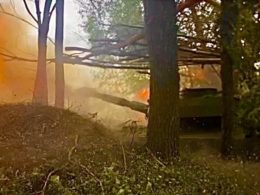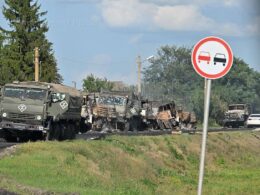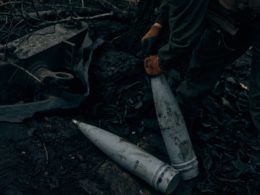The Institute for the Study of War (ISW) reported on 9 May that Russian offensive operations along the Kharkiv international border “likely have the strategic objective of drawing and fixing Ukrainian forces to this axis to enable Russian advances in other areas of eastern Ukraine.”
Ukrainian Khortytsia Group of Forces Spokesperson Lieutenant Colonel Nazar Voloshyn said that “Russian forces are attempting to incite panic in Ukrainian forces to cause them to divert resources and manpower from Donetsk and Luhansk oblasts to Kharkiv Oblast.”
According to the ISW, Russian forces have sought to exploit opportunities for localized advances due to Ukrainian shortages, “achieving tactical gains northwest and west of Avdiivka as well as intensifying efforts towards Chasiv Yar.”
ISW assesses that “resuming offensive efforts in northern Kharkiv Oblast and achieving even tactically significant gains could cause the Ukrainian military command to dedicate manpower and materiel to the defense north of Kharkiv City that it could otherwise dedicate to defending elsewhere.”
Ukrainian Commander in Chief Colonel General Oleksandr Syrskyi said on 28 April that Ukrainian forces deployed artillery and tank units to the “most threatened” areas in the Kharkiv direction. Meanwhile, the Ukrainian Ministry of Defense said on 10 May that Ukrainian forces have already deployed additional reserves to defend against the Russian offensive operation in northern Kharkiv Oblast.
The ISW reported that this Russian offensive effort “likely aims to stretch Ukraine’s limited resources and worsen Ukrainian manpower constraints by forcing Ukraine to respond to ongoing Russian offensive operations across a wider swath of territory in eastern Ukraine.”
The Russian military command “hopes that this strategic effort to draw and fix Ukrainian forces in the Kharkiv direction will weaken the Ukrainian defense in aggregate and allow Russian forces to achieve a breakthrough in any area that becomes the most vulnerable.”
However, ISW continues to assess that Russian forces will likely struggle to seize Kharkiv City itself, as “a Russian effort to seize Kharkiv City would require long drives across open terrain on a scale that Russian forces have not conducted since the start of the full-scale invasion.”
The report cites a lack of highly combat-effective forces and insufficient personnel for such an ambitious operation, noting that Russian opposition outlet Verstka reported in March 2024, citing a Kremlin source, that the Russian military assesses it needs 300,000 additional personnel to launch an operation to encircle Kharkiv City.
Other takeaways from the report:
- Russian forces began an offensive operation along the Russian-Ukrainian border in northern Kharkiv Oblast on the morning of 10 May and made tactically significant gains.
- Ukrainian Ground Forces Commander Lieutenant General Oleksandr Pavlyuk stated that the war in Ukraine will enter a critical phase in the next two months and commented on recent Russian advances around Chasiv Yar and Avdiivka.
- Russian forces recently marginally advanced near Donetsk City and in the Donetsk-Zaporizhzhia Oblast border area.
- Russian and Belarusian authorities continue to illegally deport Ukrainian citizens, including children, to Russia and Belarus.






